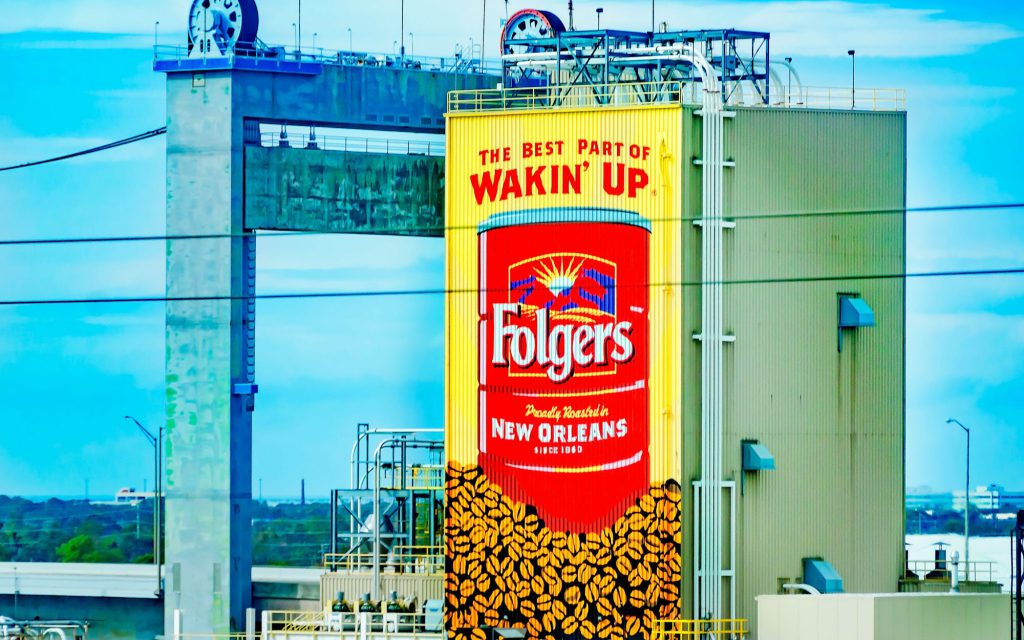The impact of artificial intelligence on the coffee industry

Artificial intelligence may be a technical buzzword but it’s already making its mark on the international coffee industry. GCR explores how it’s helping businesses save time and money, and why it’s not necessarily something to fear.
By now, a plethora of articles have been written about artificial intelligence, or AI for short. In fact, some of those articles have been written by AI – this is not one of them. It’s been hypothesised as a solution to businesses as well as a danger, with theories ranging anywhere in between.
But what exactly is AI? And does it relate to the coffee industry?
Jim Keller, President of the Computational Intelligence Society (CIS) within the Institute of Electrical and Electronics Engineers (IEEE) and University of Missouri Curators Distinguished Professor Emeritus says AI is simply the technology that enables a computer to behave or respond much like a human would do, mostly in decision-making processes.
“So far, there has never been an AI program that has been demonstrated to actually think,” Keller says. “They are ingeniously programmed systems that produce output.”
Jim Keller is President of the Computational
Intelligence Society within the Institute of
Electrical and Electronics Engineers at the University of Missouri.
Keller says a wide range of computational operations fall under the definition of ‘artificial intelligence’, but distinguishing larger AI operations to smaller ones can help people better understand the kind of technology they are dealing with.
“Some people get carried away with what the definition of AI is, but in my opinion, I’m willing to call a lot of technology AI because it serves as an umbrella term,” he says.
He points to popular AI services such as ChatGPT and DALL-E as the unofficial faces of AI. ChatGPT uses AI to generate written text based off human-fed prompts, and DALL-E does the same for photographs, which Keller says both often distract from the purpose of the technology.
“The real value [of AI] is in assisting people,” Keller says. “AI programs need to be trained to do a specific job.”
Dr Sean Holden, Associate Professor of Computer Science at Cambridge University in the United Kingdom shares the same idea that the definition of AI technology is far from the general public’s interpretation. He says AI has been in use longer than people may think.
“The idea that AI has somehow just come into practise is nonsense,” Holden says. “People have been deploying AI concepts for 30 years.”
Dr Sean Holden is an Associate Professor of Computer Science at Cambridge University.
He points to the development of driverless cars in the 1980s as an example of older AI. He says while this technology was far from applicable for daily use, it showed a willingness to automate activities through machinery at an early stage.
Holden describes AI as an “amplifier of intent” where tasks are completed just as the technology in a specific instance was intended to do.
He says AI has certainly made strides in recent years, however he cautions that much of the technology is still highly imperfect.
“There’s been a big step forward in certain capabilities [of AI] and now there’s a rush to monetise it,” he says.
“One problem is that [AI solutions] will be deployed nonetheless because it has the opportunity to save a lot of money.”
Holden adds that much of the discourse around AI comes from the developers trying to sell it, and that businesses should rely on their own research to determine if it works for them.
“The current hype is tiresome but predictable,” he says. “People have jumped to the idea that they can get rid of their entire sales team, and they’re already finding that it’s not as easy as they had hoped.”
As for the agriculture sphere, replacing humans in farming practices, for example, appears a difficult goal to reach.
“The chances to deploy AI in agriculture is not new,” Holden says. “You’re trying to harvest materials that can be damaged, and doing this with robotics is tricky because it’s difficult to make them recognise what exactly they are picking up.”
Holden believes this won’t stop AI innovation from expanding in the future, as developers will look to accomplish the lofty expectations many people have of AI.
“There’s no real way you can stop humanity from pursuing that goal,” he says. “Someone’s going to do it.”
Simonelli Group is one of many companies in the coffee machine manufacturing market to begin incorporating AI into operations through its Virtual Intelligent Scale (VIS).
The VIS, which is a component of the company’s Eagle One coffee machine, ensures the perfect quantity of coffee is brewed into a cup, depending on the pre-set recipe.
“We started this development with the University of Camerino’s department of mathematics [in Italy],” says Head of Research and Development of the Technical Department of Simonelli Group, Claudio Cingolani.
The Eagle One coffee machine from Simonelli Group includes the company’s VIS AI technology.
The barista only needs to set the desired coffee quantity in grams on the Eagle One machine’s recipe menu.
“Our system is completely automatic and can detect using AI when the flow is coming out of the machine, while catching the right quantity,” says Cingolani.
He says customer feedback for the VIS technology has been overwhelmingly positive.
“Baristas were really surprised by the system, and we were told it was very helpful once the machine was set up,” he says.
According to Cingolani, the VIS is one of the first instances of AI being used in the coffee machine market, which has contributed to the steady growth in popularity of similar products.
“AI is becoming something that we’re using every day. We’re starting to use it more and more,” he says.
“The goal of Simonelli is to simplify the workflow of the barista, so that they can use the machine to offer a good product, as well as make the customer happy.”
Outside of the coffee-making process, AI can assist in many stages of a business’ daily operations.
Finlays, a B2B supplier of tea and coffee solutions to beverage brands, is using a new AI software from global market intelligence agency Mintel.
The software, called FlavourScape AI, gives users an instant overview of the flavours used in a market or category, allowing them to quickly assess flavour trends growth from around the world.
“We use AI to help look at exciting flavours, popular flavours, and flavours that are emerging in the tea and coffee markets,” says Finlays Group Insights Manager Sian Edwards.
The FlavourScape AI technology harvests data from around the world, looking at new coffee and tea releases, and compiles information in an instant that would otherwise take a research team hours to compile.
“The final result is a maturity table with flavour options that gives us a selection to choose from,” Edwards says. “The AI helps understand the data and translates it into concepts that we can understand to figure out what could work.”
“The Mintel system has product launches from the 1990s, so it can track trends from years back.”
Edwards adds that this technology has been especially helpful in assisting businesses with new ideas that human-led research may not be able to detect.
“Consumers are interested in trying new products, especially out of curiosity,” she says. “We can already see what’s popular, but that doesn’t stimulate as much interest.”
While Finlays has assisted businesses with consulting services in the coffee and tea sector for years, FlavourScape AI has taken operations to a whole new level, saving Finlays hours in research time, and offering more advanced results.
“We’ve given flavour recommendations forever, but having this tool makes decisions even clearer thanks to how data driven it is,” Edwards says.
“Having the AI behind it gives it added weight considering it’s pulling from more data than humans ever could.
“It’s given us a lot of ideas we wouldn’t have previously had.”
The FlavourScape AI technology from Mintel is the kind of AI that IEEE’s Jim Keller says is being positively used today by different markets, and is largely different to the ‘robot dominating’ ideology some unassuming general public have.
Keller says innovation of pre-existing AI concepts is still developing, allowing more help to be offered to businesses.
“We’re going to see more collaborative AI systems moving forward that know their place in a team,” he says. “This sort of technology will become a team member, instead of something that just spits out an answer.”
For AI, this type of innovation can lead to any number of possibilities, including a new level of intelligence among machinery.
“There’s a big controversy right now about whether or not we’ll be able to get artificial general intelligence, which is where machines can respond to new environments without having been trained to them prior,” he says.
In the meantime, Keller says AI can be used to help businesses save time and money by completing smaller tasks such as sample testing and taking measurements. It’s future use and place in the global coffee market however, is one to watch.
“There are some people who believe we’re really close to [robot reliance], but most in the AI business think it’s still very far away,” he says.
This article was first published in the November/December 2023 edition of Global Coffee Report. Read more HERE.
The post The impact of artificial intelligence on the coffee industry appeared first on Global Coffee Report.



Responses